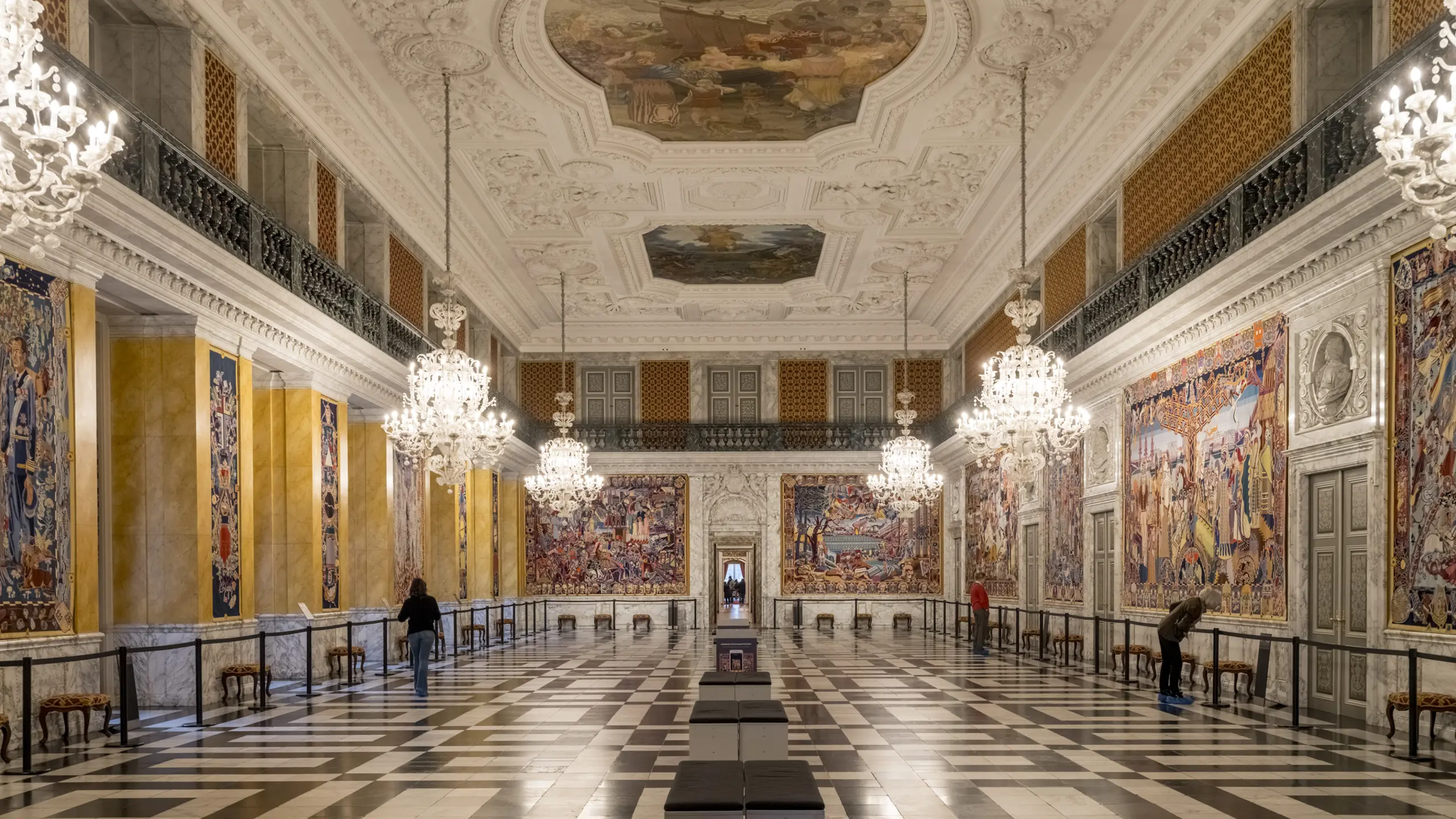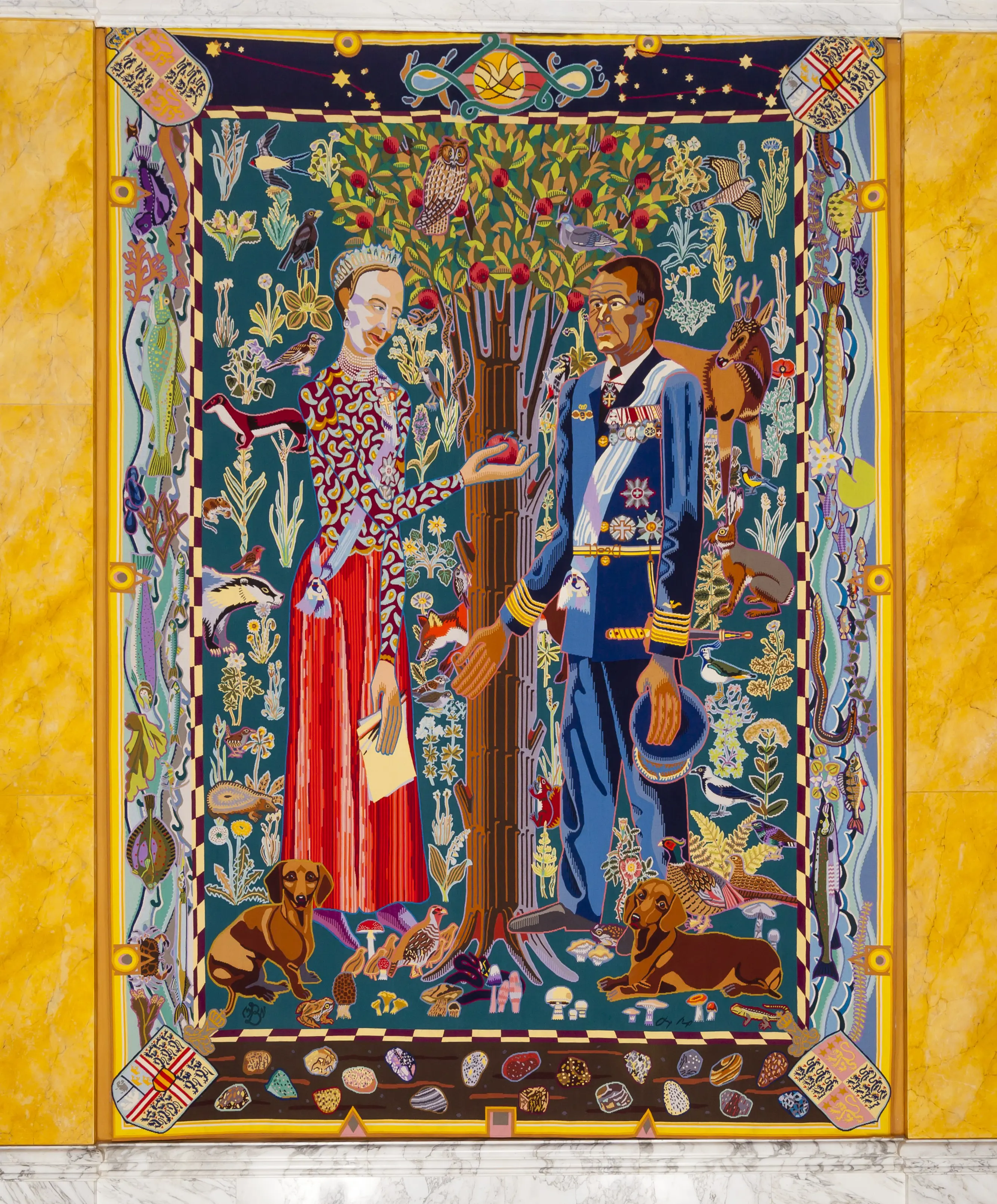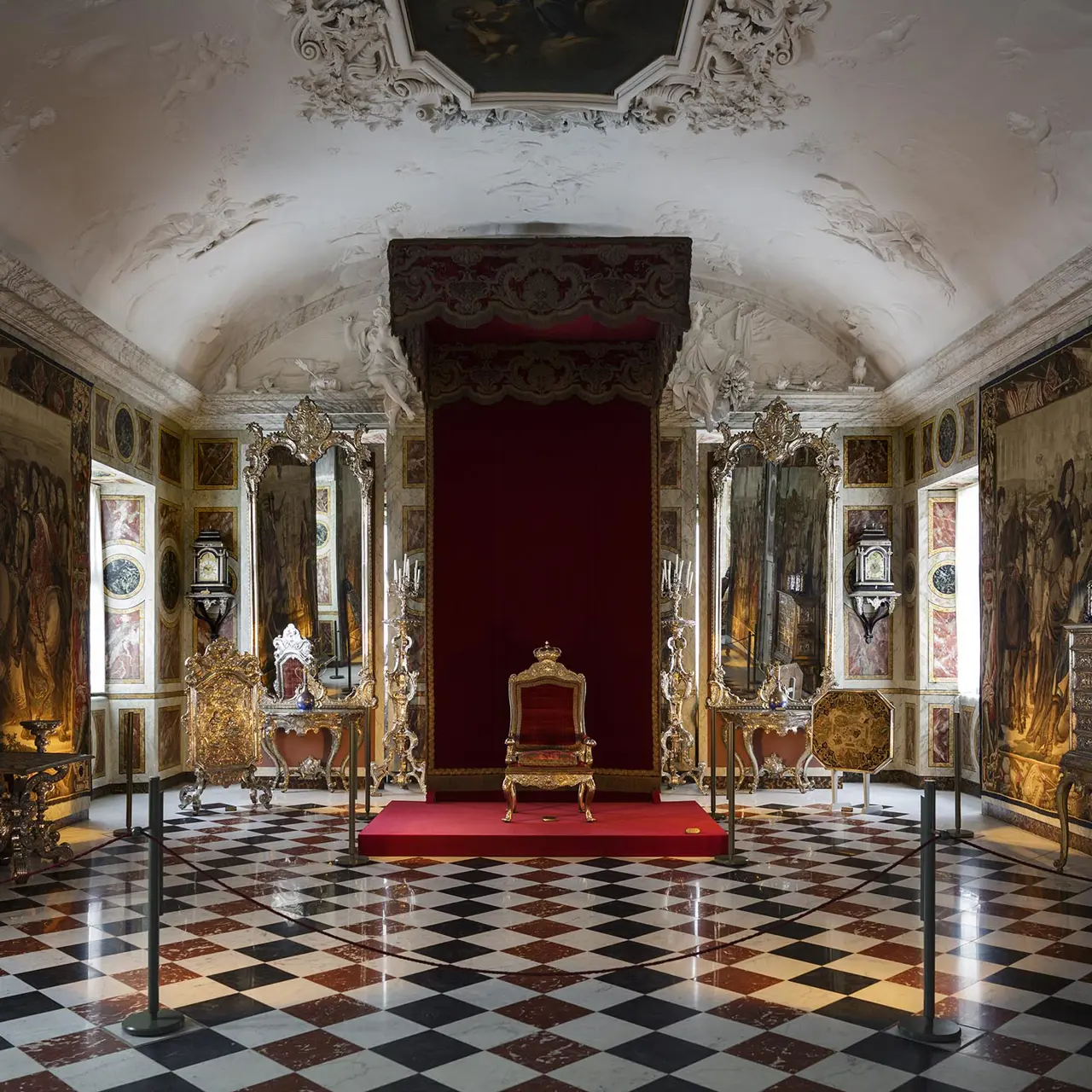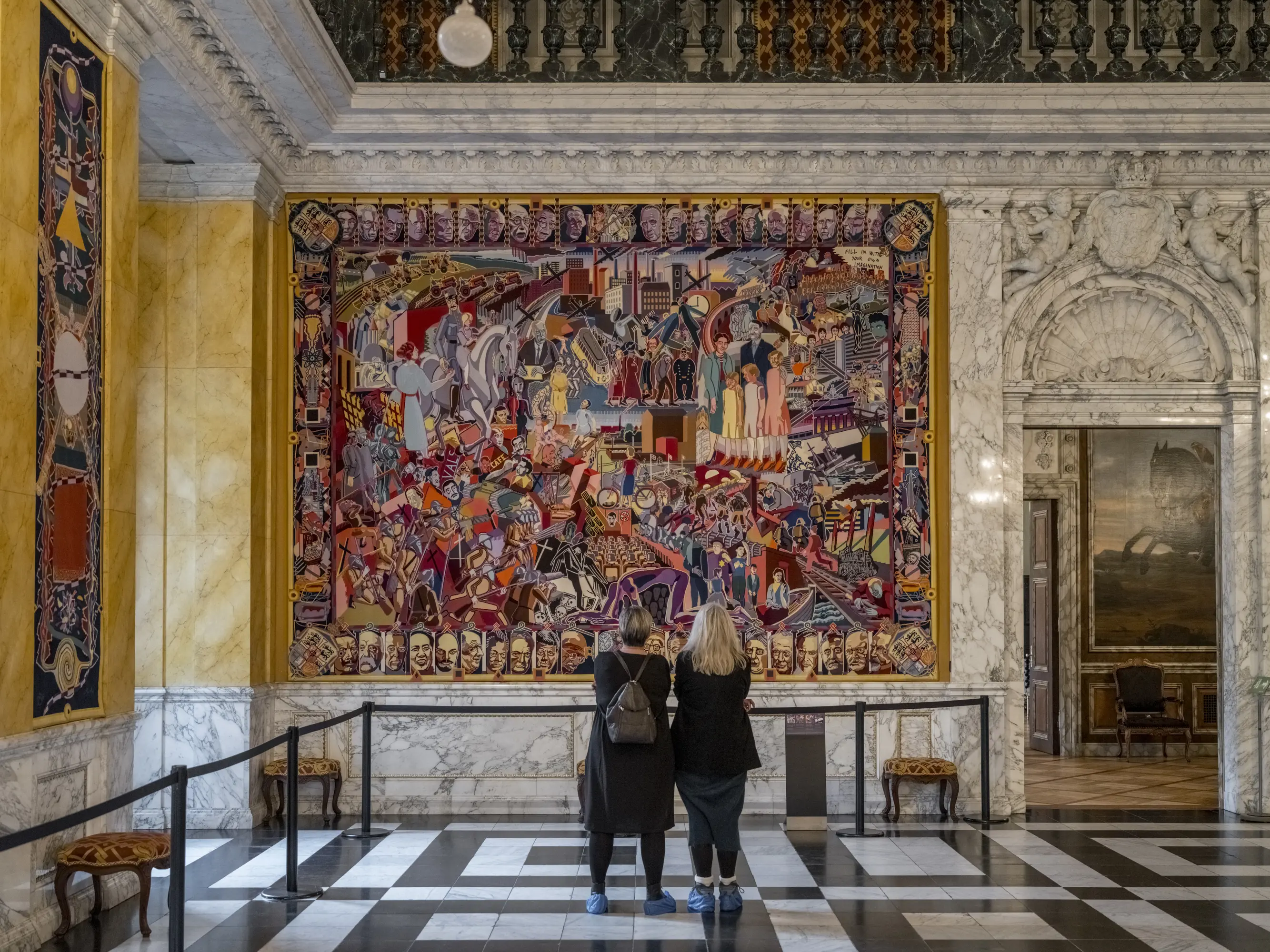Bjørn Nørgaard's tapestries

1000 Years of Danish History
In the Knights' Hall at Christiansborg Palace, the walls are adorned with 1000 years of woven Danish history, from the Viking Age to the present day. Explore the rich world of kings, queens, war-time battles, art, celebrities, historic events, animals, plants and much more from the history of Denmark.
In 1990, Her Majesty Queen Margrethe turned 50 years old. As a birthday gift, the Queen received 17 new tapestries for the Knights' Hall at Christiansborg Palace from the Danish business community. The tapestries were designed by the Danish artist Bjørn Nørgaard. He had been handed the task of telling 1000 years of Danish history based on the Danish royal lineage. Therefore, the walls of the Knights' Hall today are teeming with kings – as well as many other aspects of life in Denmark.
The creation of the tapestries
Follow the journey of the tapestries from the early stages of the work until the finished works of art were hung in the Knights' Hall.
In the tapestry 'The Present', Her Majesty Queen Margrethe II plays the leading role. Together with Prince Henrik, the Queen stands in the midst of Danish nature.
Adam and Eve?
The main image brings to mind the Biblical story of Adam and Eve. The large tree in the centre could be the Tree of Knowledge in the Garden of Eden. Queen Margrethe II is holding an apple in her hand, which she extends towards the Prince Consort. To the right of the Queen's face, a snake coils around a branch. The snake almost appears to be whispering something into the ear of the Queen.
The Queen who united the nation
Bjørn Nørgaard has depicted Queen Margrethe with long, slender arms and large hands. The large hands symbolize power – and Queen Margrethe II was Denmark's regent when the tapestries were created. The long arms symbolize the Queen as a regent who could embrace anyone in Denmark. The regent who was the nation's focal point for over 50 years on the throne.








